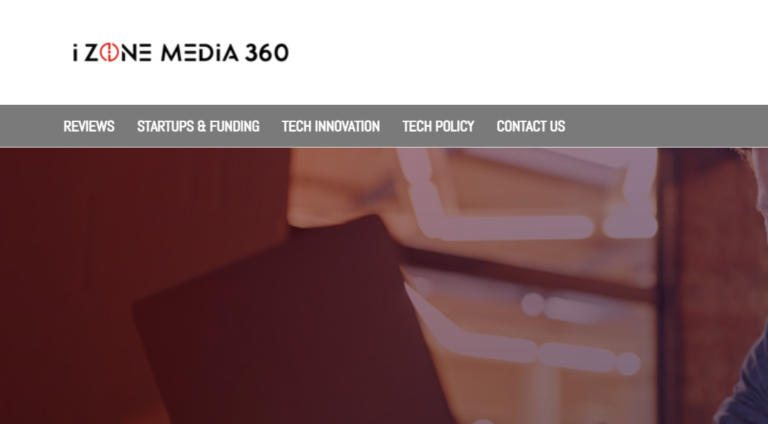The how of digital and analytics in insurance thestudypoints
the how of digital and analytics in insurance thestudypoints:
Imagine an insurance industry where paperwork is a thing of the past, claims are processed in minutes, and policies are tailored to your unique lifestyle. Sounds like a dream, right? Well, thanks to digital transformation, this dream is becoming a reality.
The insurance sector, once known for its paper-heavy processes and slow decision-making, is now embracing cutting-edge technologies like AI, blockchain, and big data analytics. These tools are not just changing the game they’re rewriting the rules entirely. From enhancing customer experiences to streamlining operations and improving risk management, the impact of digital and analytics in insurance is nothing short of revolutionary.
In this article, we’ll dive deep into “The How of Digital and Analytics in Insurance” to answer these questions. Whether you’re an insurance professional, a tech enthusiast, or simply curious about the future of this industry, you’re in the right place. Let’s explore how digital tools and data-driven strategies are reshaping insurance and how you can be part of this exciting transformation.
Table of Contents
Toggle2. Why Digital and Analytics Are Reshaping Insurance
The insurance industry is no longer just about policies and premiums it’s about delivering value in ways that were unimaginable a decade ago. Thanks to digital tools and data analytics, insurers are now able to enhance customer experiences, improve risk assessment, and streamline operations like never before. Let’s break it down.
Enhancing Customer Experience: From Paperwork to Personalization
Gone are the days when signing up for insurance meant filling out endless forms and waiting weeks for approval. Today, digital transformation is making the process faster, simpler, and more personalized than ever.
- Faster Onboarding with Automation
Imagine signing up for insurance in minutes instead of days. With automated workflows, insurers can now reduce paperwork, verify information instantly, and get customers onboarded in record time. It’s a win-win: customers get coverage faster, and insurers save time and resources. - Tailored Policies Using Customer Data
No two customers are the same, so why should their policies be? By leveraging customer data, insurers can create personalized policies that match individual needs. For example, a young driver might get a discount for safe driving habits tracked by a telematics device, while a homeowner could receive a customized plan based on their property’s unique risks. - AI Chatbots: 24/7 Support at Your Fingertips
Have a question at 2 a.m.? No problem. AI-powered chatbots are revolutionizing customer service by providing instant, round-the-clock support. Whether it’s answering FAQs, helping with claims, or updating policy details, these virtual assistants are always ready to help without the wait.
Improving Risk Assessment: Data-Driven Precision
Risk assessment is the backbone of insurance, but traditional methods often rely on limited data. Enter digital analytics, which is taking risk assessment to a whole new level.
- Predictive Analytics for Smarter Underwriting
With predictive analytics, insurers can analyze vast amounts of data from social media to IoT devices to predict risks with incredible accuracy. This means fairer premiums for customers and better risk management for insurers. - IoT Devices: Real-Time Risk Monitoring
Think of IoT devices like wearables or smart home sensors as your insurance company’s eyes and ears. These devices provide real-time data, allowing insurers to monitor risks as they happen. For example, a fitness tracker can help health insurers reward policyholders for maintaining a healthy lifestyle, while a smart home system can alert homeowners to potential hazards like water leaks or fires.
Streamlining Operations: Efficiency at Scale
Efficiency is the name of the game in today’s fast-paced world, and digital tools are helping insurers deliver just that.
- Automating Repetitive Tasks
From claims processing to policy renewals, many tasks in insurance are repetitive and time-consuming. Automation is changing that by handling these tasks quickly and accurately, freeing up employees to focus on more strategic work. - Cloud Computing: The Backbone of Modern Insurance
Cloud computing is the unsung hero of digital transformation. It provides insurers with the scalable infrastructure needed to store massive amounts of data, collaborate across teams, and ensure business continuity even in the face of disasters.
3. Key Technologies Powering the Insurance Revolution
Behind every successful digital transformation is a suite of game-changing technologies. Let’s take a closer look at the tools driving the insurance industry forward.
Artificial Intelligence (AI): The Brain Behind the Transformation
AI is the driving force behind many of the innovations in insurance today. Here’s how it’s making a difference:
- Chatbots and Virtual Assistants
These AI-powered tools are transforming customer service by providing instant, accurate responses to customer queries. Whether it’s filing a claim or updating a policy, chatbots are making interactions faster and more efficient. - Predictive Analytics for Risk and Fraud Detection
AI algorithms can analyze historical data to predict future trends, assess risks, and even detect fraudulent activities. This not only improves decision-making but also helps insurers save millions by preventing fraud.
Blockchain: Building Trust and Transparency
Blockchain is more than just a buzzword it’s a game-changer for the insurance industry.
- Smart Contracts for Automated Claims
Imagine a claims process that’s completely automated, with no paperwork or delays. That’s the power of smart contracts, which use blockchain to execute agreements automatically when certain conditions are met. - Fraud Prevention with Immutable Records
Blockchain’s immutable records make it nearly impossible to alter or tamper with data. This transparency helps prevent fraud and builds trust between insurers and customers.
Internet of Things (IoT): Real-Time Insights for Smarter Policies
IoT devices are providing insurers with real-time data that’s transforming how policies are created and managed.
- Wearables and Telematics: Personalizing Risk Assessment
Devices like fitness trackers and telematics systems collect data on everything from driving habits to health metrics. This allows insurers to offer personalized policies and even reward customers for healthy or safe behaviors. - Smart Home Devices: Preventing Claims Before They Happen
Smart home sensors can detect risks like water leaks or fires before they cause major damage. By alerting homeowners and insurers in real time, these devices help prevent claims and reduce losses.
Cloud Computing: The Foundation of Digital Insurance
Cloud computing is the backbone of modern insurance operations.
- Scalable Data Storage and Processing
With cloud platforms, insurers can store and process massive amounts of data without worrying about infrastructure limitations. This scalability is essential for handling the growing volume of data in the industry. - Seamless Collaboration Across Teams
Cloud computing enables teams to collaborate in real time, whether they’re in the same office or halfway around the world. This improves efficiency and ensures everyone is on the same page.
Big Data Analytics: Turning Data into Decisions
Data is the lifeblood of modern insurance, and big data analytics is the tool that makes it actionable.
- Customer Behavior Insights
By analyzing customer data, insurers can better understand their needs and preferences, leading to more personalized services and higher satisfaction. - Market Trend Analysis for Competitive Advantage
Big data analytics also helps insurers stay ahead of the curve by identifying emerging trends and opportunities in the market.
Overcoming Challenges: The Roadblocks to Digital Transformation
While the benefits of digital transformation in insurance are clear, the journey isn’t without its challenges. From data privacy concerns to legacy systems and cultural resistance, insurers must navigate several hurdles to succeed. Let’s explore how to tackle these roadblocks head-on.
Data Privacy and Security: Protecting Customer Trust
In an era where data is king, protecting it is non-negotiable. Customers trust insurers with their most sensitive information, and any breach can have serious consequences.
- Compliance with GDPR, CCPA, and Other Regulations
Insurers must adhere to strict data protection laws like the General Data Protection Regulation (GDPR) and the California Consumer Privacy Act (CCPA). These regulations ensure that customer data is collected, stored, and used responsibly. - Investing in Robust Cybersecurity Measures
From encryption to multi-factor authentication, insurers need to implement advanced cybersecurity measures to safeguard data. Regular audits and employee training are also essential to stay ahead of potential threats.
Legacy Systems: Bridging the Gap Between Old and New
Many insurers still rely on outdated IT systems that aren’t compatible with modern technologies. Transitioning to a digital-first approach requires careful planning.
- Gradual Migration to Cloud-Based Platforms
Instead of overhauling systems overnight, insurers can adopt a phased approach to migrate to cloud-based platforms. This minimizes disruptions and allows for smoother integration. - Modular Software Integration for Smooth Transitions
Using modular software that works alongside existing systems can help bridge the gap between old and new technologies. This approach ensures that insurers can modernize without starting from scratch.
Cultural Resistance: Winning Hearts and Minds
Change is never easy, especially in a traditional industry like insurance. Overcoming cultural resistance is key to a successful digital transformation.
- Communicating the Benefits of Digital Tools
Employees need to understand how digital tools will make their jobs easier and more efficient. Clear communication about the benefits can help win their support. - Training Programs to Upskill Employees
Investing in training programs ensures that employees are equipped with the skills needed to thrive in a digital environment. From data analytics to AI, upskilling is essential. - Involving Teams in the Transformation Process
When employees are involved in the transformation process, they’re more likely to embrace change. Encouraging feedback and collaboration can foster a culture of innovation.
5. Real-World Success Stories: Digital Transformation in Action
Nothing speaks louder than success. Let’s look at how some of the biggest names in insurance are leveraging digital tools and analytics to drive results.
Allianz: Predictive Analytics for Customer Retention
- The Challenge: Retaining customers in a competitive market.
- The Solution: Allianz used predictive analytics to analyze policyholder behavior and identify at-risk customers.
- The Result: By offering tailored incentives, Allianz boosted its customer retention rates by 20%.
MetLife: AI-Powered Claims Processing
- The Challenge: Reducing wait times for dental claims.
- The Solution: MetLife introduced an AI-powered claims system that automates the entire process.
- The Result: Dental claims are now processed in under a minute, improving customer satisfaction and reducing operational costs.
Ping An: AI and Blockchain for Fraud Detection
- The Challenge: Reducing fraud and processing costs.
- The Solution: Ping An implemented AI and blockchain to automate claims processing and detect fraudulent activities.
- The Result: The company achieved a 30% reduction in processing costs and significantly improved fraud detection rates.
The Future of Insurance: What’s Next in Digital Innovation?
The insurance industry is on the brink of a tech-driven revolution, and the future looks brighter than ever. Here’s what’s on the horizon.
Hyper-Personalization: Policies Tailored to You
- Dynamic Pricing Based on Real-Time Data
Imagine insurance premiums that adjust based on your daily habits. With real-time data from IoT devices, insurers can offer dynamic pricing that rewards safe driving, healthy living, and more. - Behavior-Based Discounts for Safe Driving and Healthy Habits
From fitness trackers to telematics, insurers are using data to offer discounts for positive behaviors, creating a win-win for customers and companies alike.
Proactive Risk Management: Preventing Claims Before They Happen
- IoT and AI Working Together to Mitigate Risks
Smart home sensors, wearables, and other IoT devices are enabling insurers to detect risks in real time. Combined with AI, these tools can predict and prevent incidents before they lead to claims.
Ecosystem-Driven Models: Partnerships Beyond Insurance
- Collaborations with Tech Companies, Healthcare Providers, and Retailers
The future of insurance lies in ecosystems where insurers partner with other industries to offer integrated services. For example, a health insurer might collaborate with a fitness app to reward customers for staying active.
Emerging Trends to Watch
- AI and Automation: The Backbone of Future Operations
From underwriting to claims processing, AI and automation will continue to streamline operations and reduce costs. - IoT Integration: Smarter Policies Through Real-Time Data
As IoT devices become more widespread, insurers will have access to even more data for personalized policies and risk prevention. - Blockchain: The Future of Transparent and Secure Transactions
Blockchain’s immutable records and smart contracts will play a key role in reducing fraud and improving transparency.
How to Start Your Digital Transformation Journey
So, you’re ready to embrace digital transformation but where do you begin? The journey might seem daunting, but with the right approach, you can navigate it successfully. Here’s a step-by-step guide to help you get started.
1for1: Investing in Last-Mile Efforts
The Concept: For every dollar you invest in digital tools and analytics, you need to spend at least another dollar on last-mile efforts. These include:
- Talent and Capabilities: Hiring skilled professionals or upskilling your existing team.
- Change Management: Ensuring your organization is ready to adopt new technologies and processes.
- Why It Matters: Without these efforts, even the best technologies won’t deliver the desired results. It’s like buying a high-performance car but forgetting to hire a skilled driver.
Focus on the Future of Work: Redefining Roles and Skills
- Building Interdisciplinary Teams
Digital transformation requires a mix of skills from data scientists to customer experience experts. Interdisciplinary teams bring diverse perspectives and problem-solving approaches to the table. - Adjusting Incentives and Performance Management
To encourage innovation, you may need to rethink how you reward and evaluate employees. For example, consider incentivizing teams to adopt new technologies or achieving digital milestones.
Eat the Digital Elephant One Bite at a Time
- Breaking Transformation into Staged Solutions
Trying to tackle everything at once can be overwhelming. Instead, break your transformation into smaller, manageable stages. Start with high-impact areas like customer onboarding or claims processing, and build from there. - Prioritizing High-Value Business Domains
Focus on areas that deliver the most value to your business and customers. For example, if fraud detection is a major pain point, prioritize implementing AI-powered analytics to address it.
Conclusion: Embracing the Digital Future of Insurance
The insurance industry is at a crossroads. Digital tools and analytics are no longer optional they’re essential for staying competitive in a tech-driven world. From enhancing customer experiences to streamlining operations and improving risk management, the benefits of digital transformation are undeniable.
But the journey doesn’t end here. As technologies like AI, IoT, and blockchain continue to evolve, insurers must stay ahead of the curve by embracing innovation and adapting to change. The future belongs to those who are willing to take the leap and reimagine what insurance can be.
So, what are you waiting for? The time to act is now. Start your digital transformation journey today and position your business for success in the digital age.
For more information visit: businesstechtime.com






